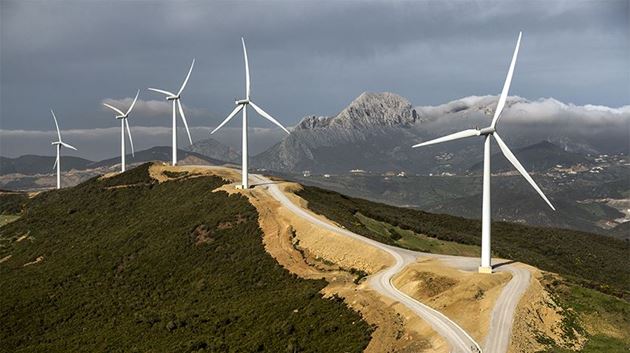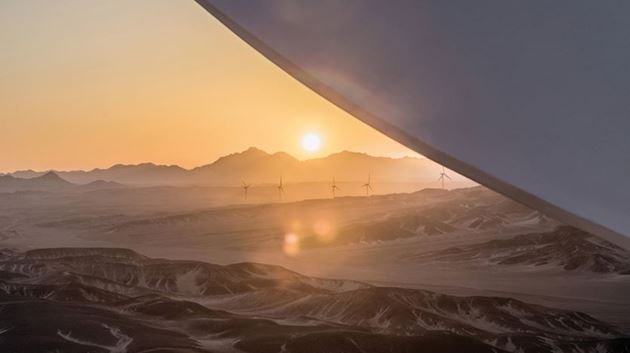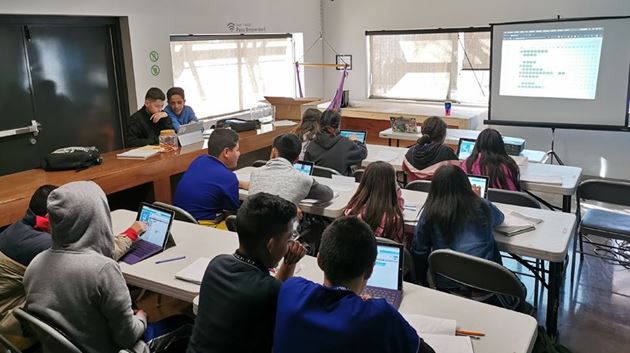
Reindeer and four-meter deep snow can’t stop standout Swedish Stavro project
Madrid / 15 September 2020
A month-long stop to let breeding reindeer pass, and the potential for up to four meters of snow this winter, won’t stop the exemplary Stavro project for reaching completion by the end of next year, says Siemens Gamesa project manager Carsten Jacobsen.
And beyond those factors, the project, located in the west of Umeå, in Sweden, will also stand out simply for the tough conditions the team will face to install it successfully.
“The site is in a very challenging area. In a bad winter we can expect up to four meters of snow, and we need to make sure up to 100km of roads can be accessed to commission the site. But these are pretty standard challenges for these countries and won’t be a problem,” says Carsten.
And other mobile obstacles also await. “In April we must close operations for a full month, to let the local Sami farmers pass with their reindeer. This is very common for larger projects in the Nordics and helps to preserve local traditions and land use. Yet despite this we will still deliver the project on time,” adds Carsten. The indigenous Sami people inhabit large parts of what today forms part of Norway, Sweden and Finland and many rely on reindeer herding for their income.
Carsten explained that the company would begin to install the turbines split between two sub-sites at Blodrotberget, with 40 turbines, and Blackfjället, with 22 turbines in early January 2021, and take most of the year to complete. But already 58 of the 62 nacelles needed for the project have been manufactured, as well as 60 towers and 37 sets of blades. So work is already progressing well.
Carsten’s confidence in successfully handing over the project on time is based on a long history in the industry. Indeed, this is the 48th project he has worked on over 25 years in the industry, installing clean energy in 27 countries.
Taking a lead role in the project is Prime Capital, a German asset manager that has formed a collaboration with Siemens Gamesa to build further wind farms in Sweden, Norway and Finland and potentially Iceland. The company gives institutional investors the opportunity to invest in these renewable energy projects through a newly launched fund. For Stavro, it brought Google onboard to buy its energy production for its growing data centers in the region, as well as local paper and board producer and original developer of the project Holmen, assisting it in its transition to using 100% renewables.
“The Stavro project and its predecessor Nordly Vind in Norway, evolved into a broader collaboration agreement with Siemens Gamesa. It gives us early access to projects, to which we apply a value-add strategy of optimizing all aspects of the projects, from permitting to financing, and including technical optimizations, enabling us to maximize value for investors,” says Florian Prokott, investment manager for the project at Prime Capital.

The Stavro project is also important as it clearly shows the more active role that corporations are taking to play their part in the energy transition. Many companies are able to fulfill their green energy objectives by using Power Purchase Agreements (PPAs), which offer them many benefits. These long-term electricity contracts are bought by corporates from an electricity supplier enabling them to guarantee green energy for their operations.
As Florian at Prime explained: “Corporates such as Google are trying to reduce their CO2 footprint to provide green energy to run their data centers. And by using PPAs, corporates can also lock in a power price, providing stability of their energy costs over the medium term, at competitive prices compared to spot price forecasts.
The Nordics in particular offer a very attractive environment for energy intensive industrials switching to renewables, given a very competitive cost of production owing to strong wind and economies of scale.”
In fact, Google is perhaps the leading example of how corporates are switching over to renewables. Since 2017 Google has matched 100% of its electricity consumption with renewable energy purchases, signing PPAs worth around 4 GW of energy. A new objective recently laid out by the company aims to make it the first major corporation to achieve 24/7 carbon free energy by 2030 without any offsetting. And perhaps surprisingly, while the world’s internet use is increasing, Google’s electricity consumption at its data centers has remained at 2012 levels thanks to efficiency measures. Nonetheless, a significant amount of electricity is needed to power the trillions of Google searches every year and play more than 400 hours of YouTube videos uploaded every minute.
Many other corporates are also leading the way. In 2019, 19.5 GW of energy were purchased through PPAs from over 100 companies across 23 countries, according to data from Bloomberg New Energy Finance (BNEF). This figure may fall in 2020, says BNEF, given many corporations in the world’s leading market the U.S. have put off buying PPAs as the coronavirus pandemic rumbles on.
Still, the long-term outlook for PPAs remains strong, and adds to the momentum pushing for an energy transition throughout society. And that’s exactly what the Stavro project can help to do – working with partners to enable the transition to happen.



